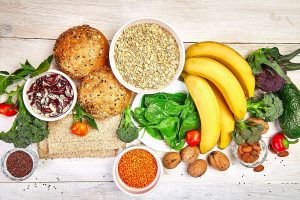THURSDAY, June 8, 2023 (American Heart Association News) — A cold glass of water can refresh when temperatures soar. But if your taste buds need an extra zing, a sip of agua fresca can help.
Agua fresca, long ubiquitous in Mexico and other Latin American countries, is an all-natural fruit drink replete with nutrients, said Krista Linares, a registered dietitian nutritionist in Los Angeles. “It can be very refreshing and a perfectly valid part of a healthy diet.”
Traditional agua fresca, which is Spanish for “fresh water,” is made by blending fruit pulp with water, sweetened then served cold. Seeds and grains and even flowers can be used instead of fruit. For example, soaked rice is used to make agua de horchata; soaked chia seeds for agua de chia; and hibiscus flowers for agua de Jamaica.
“Throughout Latin America you will also see drinks made from oats, made from barley,” Linares said.
Linares likes that homemade agua fresca, unlike sugary soft drinks, can be easily modified to individual taste as a healthier alternative. “And you can get some fiber, vitamins and minerals from the fruit, depending on the flavor and how it’s made,” she said.
In recent years, the popularity of agua fresca has exploded in the United States. Foodies rave about it, and online recipes abound. “The Latino population is growing in the U.S., and I feel like it’s becoming a bigger part of the conversation in terms of culture and food,” Linares said.
In Mexico, aguas frescas date to the time of the Aztecs, from the 13th to the 16th century. They would add water to crushed fruits and ground flowers to quench their thirst during journeys, according to Mexico’s Department of Agriculture and Rural Development.
Agua fresca was a favorite childhood drink of Linares, who grew up near Minnesota’s Twin Cities. Her mother is from Mexico and her father from Cuba. On weekends, Linares’ family would drive to downtown Minneapolis or St. Paul and shop at Latino markets for food ingredients that couldn’t be found where they lived.
“We would always get a treat while we were there,” she said. “Usually, we’d get lunch and agua fresca.” She favored agua de Jamaica because of its sweet, tart taste.
Agua de Jamaica, pronounced “ha-my-ca,” has long graced the tables of Latino families, neighborhood markets and restaurants. Tamarind, papaya, lime, lemon, orange, pineapple and watermelon also are popular ingredients for agua fresca, but just about any fruit – and some vegetables – can be used.
Eating fruits and vegetables can help lower blood pressure and may reduce the risk of heart disease and stroke, research shows. They also can help prevent other illnesses. Take watermelon, which is packed with vitamins A, C and B6. Its antioxidants may help reduce the risk of diabetes, obesity and cardiovascular disease, research suggests. Papaya, which is high in vitamin C and antioxidants, also may help prevent heart disease.
Linares said the nutritional content in agua fresca can depend on the type of fruit used and how the drink is prepared. For instance, she said, the amount of fiber may change when most of the fruit pulp is strained.
A benefit of preparing your own agua fresca is that the type and amount of sweetener can be controlled, Linares said. It’s wise to consider the total sugar content being consumed in one’s overall diet, she said. A high intake of food and beverages with added sugar can contribute to a higher risk of high blood pressure, Type 2 diabetes, coronary heart disease and obesity, studies show. The American Heart Association recommends limiting added sugar to 6 teaspoons (25 grams) daily for most women and children over 2, and 9 teaspoons (36 grams) per day for most men.
Linares cautions about the added sugar and loss of healthy nutrients in commercial aguas frescas. “When we’re talking about bottled or powder versions, we’re thinking about that more closely to a soda because we’re missing the vitamins and minerals and fiber from the fruit.”
She recommends the homemade version for those who want to add agua fresca to their diet. For her, it’s not just a healthy, tasty drink. It’s also one that brings back fond childhood memories.
American Heart Association News covers heart and brain health. Not all views expressed in this story reflect the official position of the American Heart Association. Copyright is owned or held by the American Heart Association, Inc., and all rights are reserved.
By Lourdes Medrano, American Heart Association News
Copyright © 2025 HealthDay. All rights reserved.

















